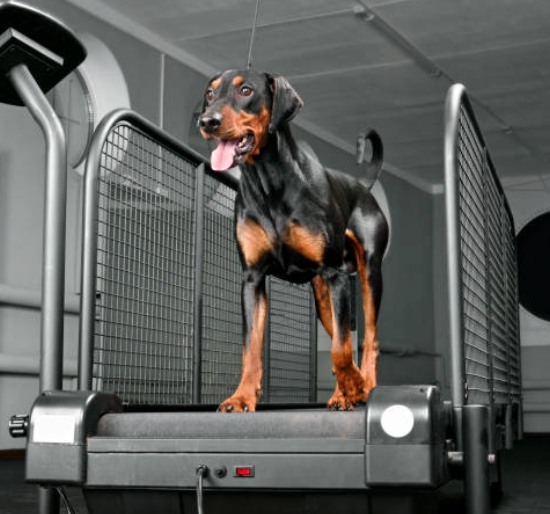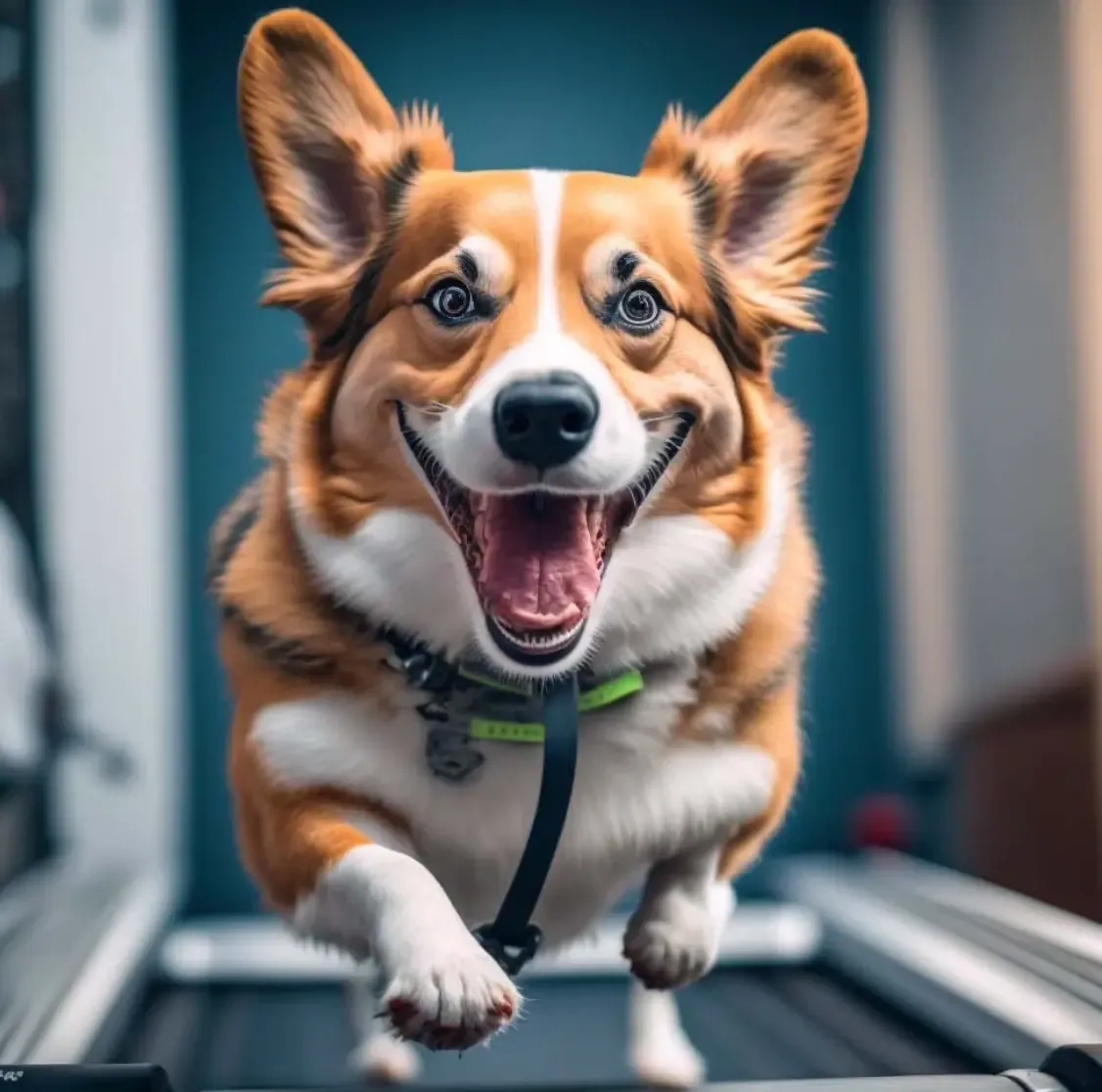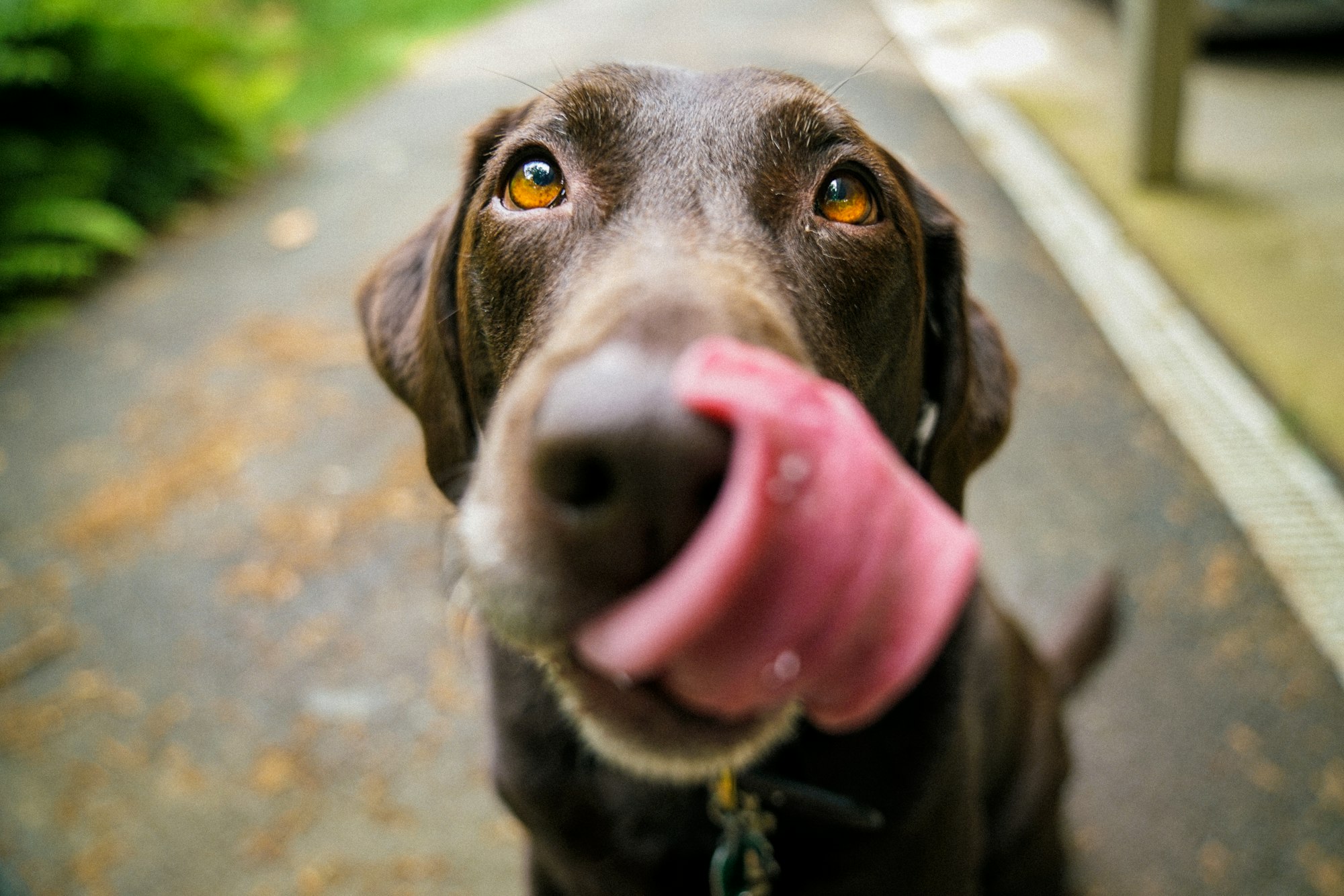Taking care of your dog's physical and mental well-being is crucial for their overall health and happiness. While regular walks and outdoor activities are essential, sometimes it's challenging to provide enough exercise, especially in unfavorable weather conditions or if you have a busy schedule. This is where a dog treadmill can come in handy. This article explores the benefits of using a dog treadmill, factors to consider when choosing one, how to introduce your dog to it, common mistakes to avoid, and maintenance tips. Let's dive in!

Benefits of a Dog Treadmill
1. Exercise and Weight Management: Regular exercise is essential for keeping your dog fit and maintaining a healthy weight. A dog treadmill provides a controlled environment where you can set the pace and duration of the exercise session. Whether your dog needs to shed a few pounds or maintain their current weight, a treadmill allows you to tailor the workout specifically to their needs.
2. Mental Stimulation: In addition to physical exercise, dogs also require mental stimulation to prevent boredom and destructive behaviors. A treadmill can offer a new, engaging activity that challenges your dog's mind. By varying the speed and incline, you can simulate different terrains and keep your furry friend mentally engaged during the exercise session.
3. Convenient Indoor Exercise: Having a dog treadmill at home provides the convenience of indoor exercise. It eliminates the need for weather-dependent walks or trips to the dog park. Whether it's raining, snowing, or scorching hot outside, you can ensure your dog gets their much-needed exercise in your home.
Factors to Consider When Choosing a Dog Treadmill
When selecting a dog treadmill, there are several important factors to deal with. These considerations will help you choose the right treadmill that suits your dog's needs and ensures their safety and comfort. Here are the key factors to consider:
Size and Weight Capacity: One of the first things to consider is the size of the treadmill and its weight capacity. Ensure that the treadmill is appropriate for your dog's size and breed. Larger dogs will require a treadmill with a wider and longer running surface to accommodate their stride comfortably. Be sure to check the weight capacity of the treadmill as well, ensuring it can handle your dog's weight without any issues.
Speed and Incline Options: A good dog treadmill should offer adjustable speed and incline options. Dogs have different exercise needs, so having the ability to control the speed and incline allows you to customize the workout intensity. Start with a slower pace and gradually increase it as your dog becomes more accustomed to using the treadmill. Incline options can mimic outdoor terrains, adding variety and challenge to the workout.
Safety Features: Safety should be a top priority when choosing a dog treadmill. Look for treadmills with safety features such as side panels or guardrails that help prevent your dog from accidentally falling off the treadmill during exercise. A sturdy and non-slip running surface is essential to ensure your dog maintains a good grip while walking or running. Additionally, some treadmills come with an emergency stop button, allowing you to quickly halt the machine if needed.
Noise Level: Consider the noise level of the treadmill. Dogs have sensitive hearing, and excessive noise can cause stress or anxiety during their exercise sessions. Look for treadmills that operate quietly to provide a calm and enjoyable experience for your dog. Reading product reviews or testing the treadmill in person, if possible, can give you a better idea of its noise level.
Price and Durability: Price and durability are important factors to consider when investing in a dog treadmill. While it's tempting to opt for a cheaper option, acknowledge that a quality treadmill will provide better performance, durability, and safety for your dog. Look for treadmills made with sturdy materials that can withstand regular use. It's worth investing in a reliable and durable treadmill that will last for years, ensuring a worthwhile investment for your furry companion's health and well-being.
By carefully considering these factors when choosing a dog treadmill, you can find the perfect equipment that meets your dog's exercise needs, provides safety, and offers long-term durability. Think of always prioritizing your dog's comfort and safety to ensure enjoyable exercise sessions on the treadmill.
But always make sure to keep track of your pup, especially during training. You can use a Fi Smart Dog Collar to watch their location and keep track of daily exercise.
How to Introduce Your Dog to a Treadmill
Introducing your dog to a treadmill requires patience, positive reinforcement, and creating a positive environment. Here are some steps to help you introduce your dog to the treadmill:
Start Slowly and Gradually: When introducing your dog to the treadmill, it's necessary to start slowly and gradually. Begin by familiarizing your dog with the treadmill when it's turned off. Allow them to sniff and investigate the machine, getting accustomed to its presence. Once your dog feels comfortable around the treadmill, you can start turning it on at the lowest speed.
Encourage your dog to use treats or their favorite toys on the treadmill. Keep the initial sessions short, around 1-2 minutes, to prevent overwhelming them. Gradually increase the duration and speed of the treadmill sessions as your dog becomes more comfortable and confident.
Use Positive Reinforcement: Positive reinforcement is vital to helping your dog associate the treadmill with a positive experience. Whenever your dog steps onto the treadmill or makes any progress, offer praise, treats, or verbal cues. This positive reinforcement helps create a positive association with the treadmill, making it more likely that your dog will willingly use it. Avoid using force or punishment if your dog seems hesitant. Instead, focus on rewarding and encouraging their progress. Patience is crucial during this process, as dogs adjust to the treadmill at their own pace.
Create a Positive Environment: Creating a positive environment around the treadmill can help your dog feel more comfortable and at ease. Choose a quiet and calm area for the treadmill sessions, free from distractions or loud noises. Clear the space around the treadmill to ensure your dog has enough room to move safely. Consider placing a familiar blanket or mat on the treadmill to make it more inviting and comfortable for your pet. You can also play soft and soothing music in the background to help create a relaxing atmosphere. To further encourage your dog, you can walk or run alongside them on the treadmill initially. This companionship can provide reassurance and make the experience more enjoyable for your dog.
By starting slowly, using positive reinforcement, and creating a positive environment, you can help your dog feel comfortable and confident using the treadmill. Remember to be patient, understanding that each dog adapts at their own pace. With time and consistency, your dog will gradually embrace the treadmill as a beneficial and enjoyable exercise tool.

Common Mistakes to Avoid
Introducing your dog to a treadmill can be a positive experience when done correctly. However, it's essential to be aware of common mistakes and avoid them to ensure your dog's safety and well-being. Here are some blunders to avoid:
Forcing the dog onto the treadmill: One of the biggest mistakes is forcing your dog onto the treadmill. It's important to remember that each dog has their own pace of adaptation. Forcing them onto the treadmill can create fear or anxiety, making the experience negative for them. Instead, use positive reinforcement and patience to gradually introduce and encourage your dog to use the treadmill willingly.

Neglecting Safety Precautions: Neglecting safety precautions is another common mistake. Always ensure that your dog's paws, tail, and fur are clear of any moving parts before starting the treadmill. Additionally, make sure the emergency stop button is easily accessible in case you need to halt the treadmill quickly. By being vigilant about safety, you can prevent accidents and injuries.
Overexercising or Underexercising: Finding the right balance of exercise is crucial. Overexercising your dog on the treadmill can lead to fatigue, muscle strain, or injury. On the other hand, underexercising may not provide the physical and mental stimulation your dog needs. Consult with your veterinarian or a professional trainer to determine the appropriate duration and intensity of treadmill sessions based on your dog's age, breed, and overall health.
Not Supervising the Dog: Leaving your dog unsupervised on the treadmill is a mistake that should be avoided. Always stay close and monitor your dog during their treadmill sessions. This allows you to observe their behavior, ensure they are comfortable, and address any potential issues immediately. Supervision also helps prevent accidents and provides a sense of security for your dog. By avoiding these common mistakes, you can create a positive and safe environment for your dog to use the treadmill. Remember to prioritize your canine’s well-being, follow safety guidelines and provide them with the appropriate level of exercise to keep them healthy and happy.
Maintenance and Care Tips for a Dog Treadmill
To ensure the longevity and optimal performance of your dog treadmill, regular maintenance and care are essential. Here are some important tips to keep in mind:
Regular Cleaning: Regular cleaning is crucial to keep your dog's treadmill in good condition. After each use, wipe down the running surface, side panels, and other accessible parts with a damp cloth to remove dirt, hair, and sweat. Use a mild, pet-safe detergent if necessary. This helps prevent the buildup of debris and ensures a clean and hygienic surface for your dog's exercise sessions.
Lubrication: Proper lubrication of the treadmill's moving parts is vital to prevent friction and ensure smooth operation. Refer to the manufacturer's instructions for the recommended lubricant and lubrication schedule. Apply the lubricant to the appropriate areas as instructed, typically the belt and deck, to keep the treadmill running smoothly. Regular lubrication helps extend the lifespan of the treadmill and reduces wear on its components.
Checking for Wear and Tear: Regularly inspect your dog's treadmill for any signs of wear and tear. Check the running belt for signs of fraying or excessive wear. Inspect the frame, side panels, and control panel for any loose screws or damaged parts. If you notice any issues, contact the manufacturer or a professional for repairs or replacements. Promptly addressing wear and tear helps maintain the treadmill's safety and performance.
Store Properly: When the treadmill is not in use, proper storage is essential to protect it from dust, moisture, and potential damage. Follow the manufacturer's instructions for storing the treadmill. In general, ensure the treadmill is in a dry and clean area, away from direct sunlight or extreme temperatures. Consider covering the treadmill with a protective cover to shield it from dust and debris.
By following these maintenance and care tips, you can keep your dog treadmill in excellent condition, ensuring its functionality and safety for years to come.
Conclusion
A dog treadmill can be a valuable tool in keeping your canine companion physically and mentally fit. It provides a convenient and controlled exercise option, especially in unfavorable weather conditions or busy schedules. By introducing your dog to the treadmill gradually, using positive reinforcement, and avoiding common mistakes, you can make their treadmill experience positive and enjoyable.
Remember to consider factors such as size, weight capacity, speed, incline options, safety features, and noise level when choosing a dog treadmill. Prioritize your pup's safety, comfort, and well-being throughout the process. Regular maintenance, including cleaning, lubrication, and checking for wear and tear, will ensure the longevity and optimal performance of the treadmill. Investing in a dog treadmill and incorporating it into your hound's exercise routine can contribute to their overall health and happiness. So, start exploring the benefits of a dog treadmill and provide your furry friend with a fun and engaging exercise experience.

FAQs (Frequently Asked Questions)
1. Is a dog treadmill suitable for all breeds and sizes of dogs?
A: Yes, dog treadmills come in different sizes and weight capacities to accommodate various breeds and sizes of dogs. Ensure you choose a treadmill appropriate for your dog's specific needs.
2. Can I use a regular human treadmill for my dog?
A: It's not suggested to use a regular human treadmill for your dog. Dog treadmills are designed with features and safety measures tailored specifically for dogs. Using a human treadmill may not provide the needed size, speed, or safety features required for your dog's exercise routine.
3. How often should I clean the dog treadmill?
A: Ideally, you should clean the dog treadmill after each use. Regular cleaning helps maintain hygiene and prevents the buildup of dirt, hair, and sweat. Wipe down the running surface, side panels, and other accessible parts with a damp cloth to remove debris.
4. Can a dog treadmill replace outdoor walks?
A: While a dog treadmill can offer exercise in certain situations, outdoor walks offer additional benefits such as fresh air, socialization, and exposure to different environments. It's required to deliver a balance between treadmill exercise and outdoor activities to ensure your canine's overall well-being.
5. How do I introduce my dog to the treadmill if they are hesitant?
A: If your dog is hesitant about using the treadmill, it's critical to start slowly and use positive reinforcement. Encourage them with treats, toys, and praise when they make progress or show interest in the treadmill. Patience, consistency, and a positive environment will help them become more comfortable over time.
Remember, if you have specific concerns or questions about your puppy's health or exercise routine, it's always best to consult with your veterinarian or a professional dog trainer for personalized guidance.
For more helpful articles about pet-parenting tips, check out the Off Leash blog at TryFi.com.
Want to know more about TryFi.com? The Fi Dog Collar is a GPS tracking collar that not only keeps track of your dog’s location, activity levels, and sleep patterns, but it also alerts you if your dog escapes your backyard. This is the fastest way to find your dog after an escape. Try the Fi Dog Collar today!






